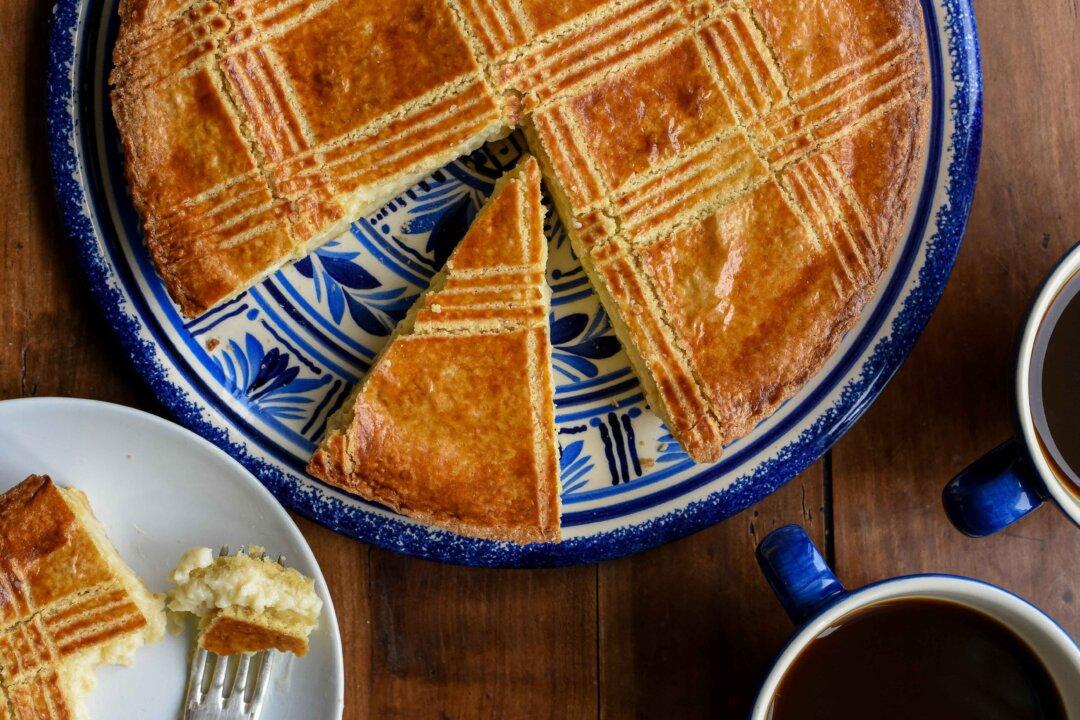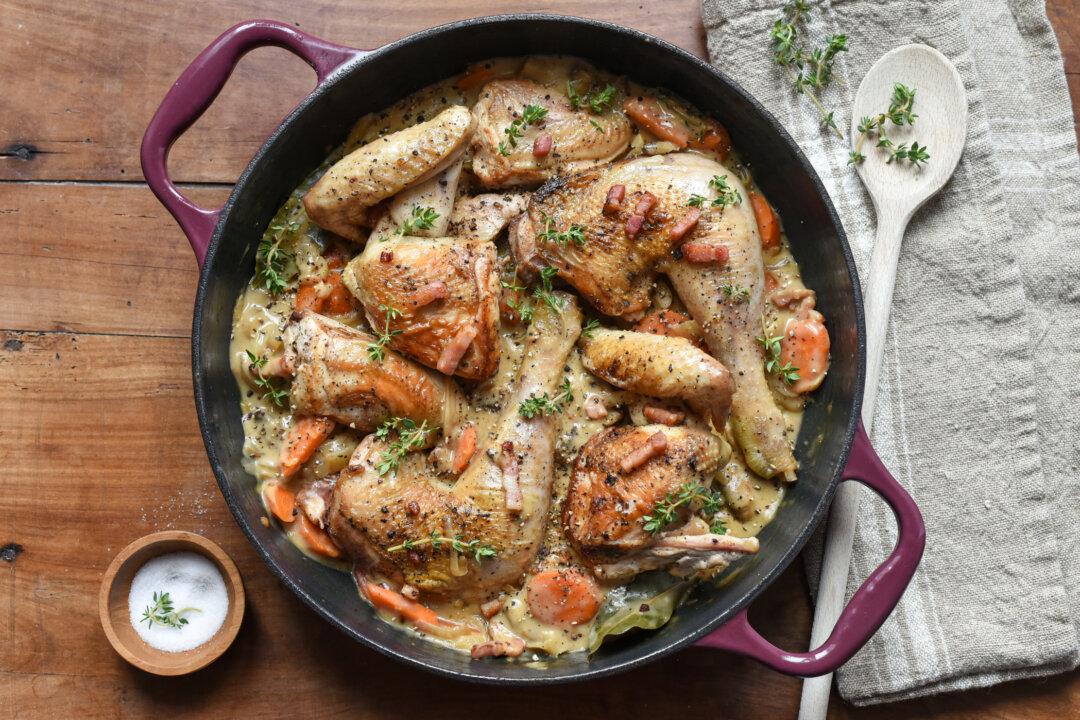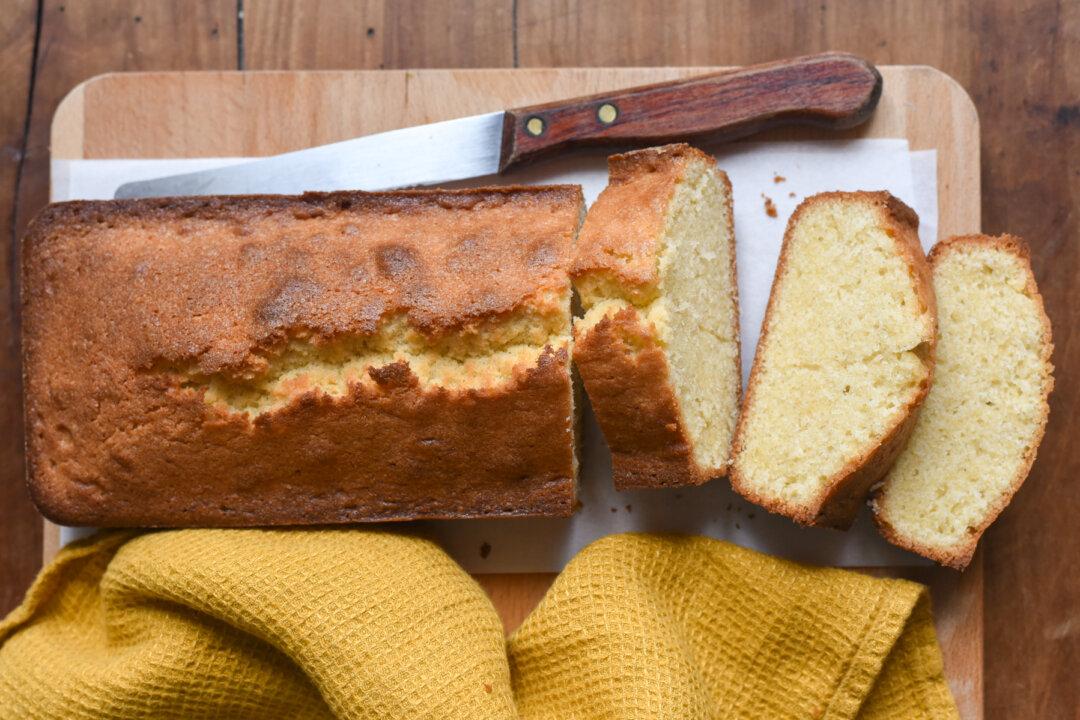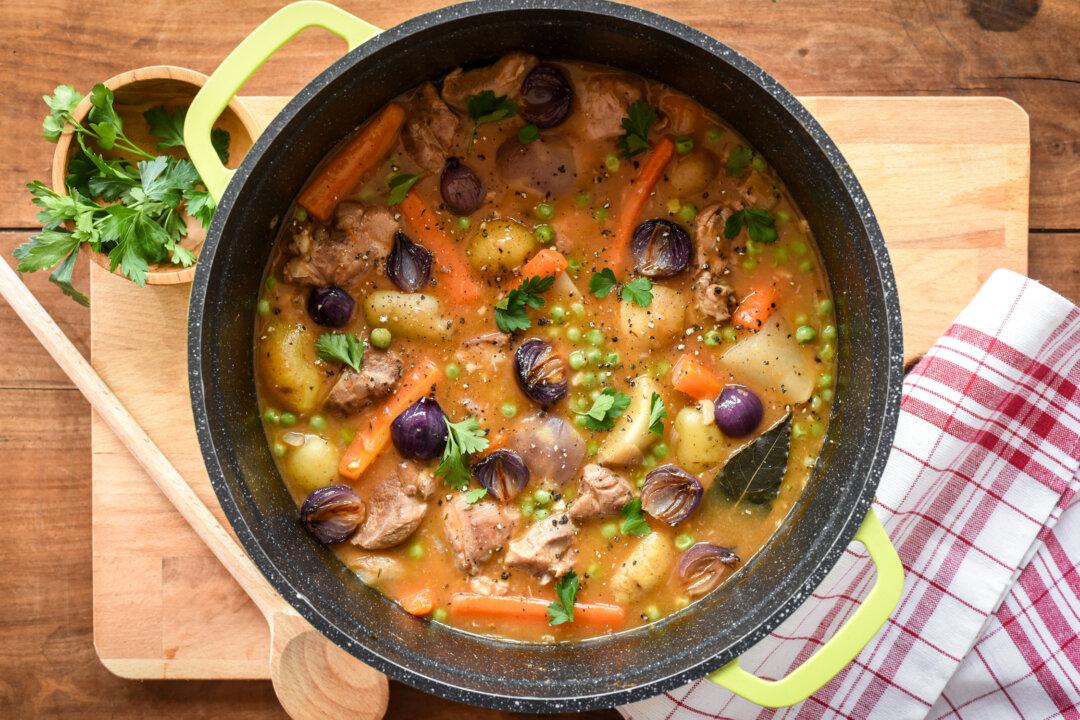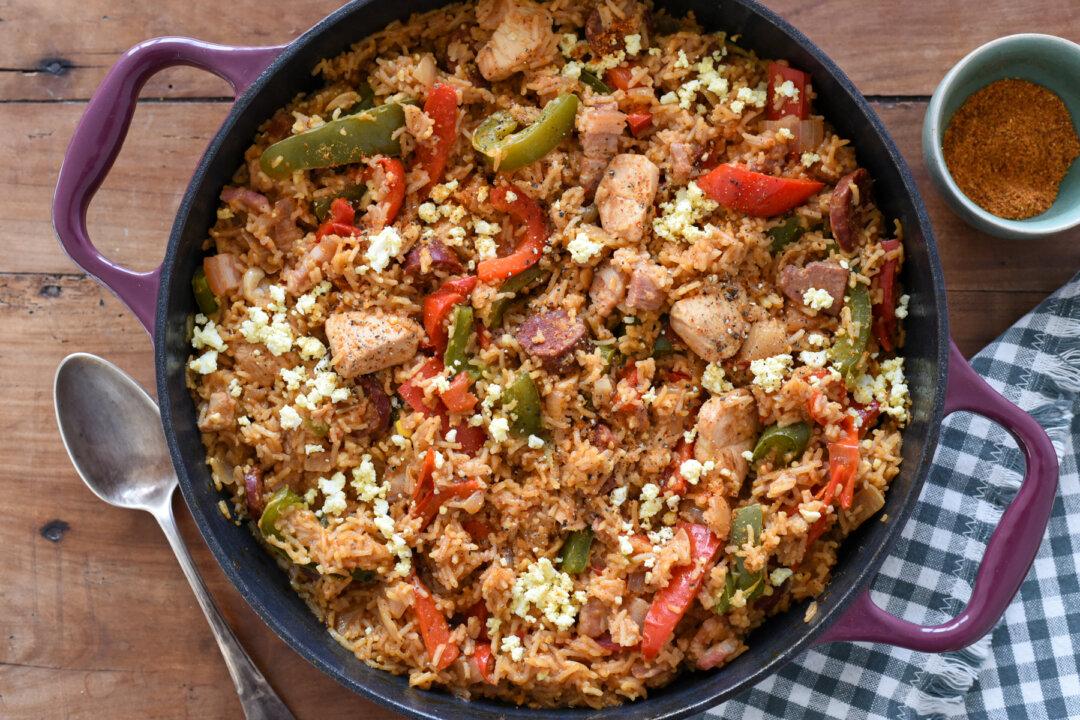Halfway between a cake and a pie, the classic Basque cake—known as gâteau Basque—is a staple from southern France and northern Spain, the lands of the Basque people. It has a rich and buttery double-layered crust encasing a delicious pastry cream. Although locals traditionally serve the cake to accompany coffee or tea, the elegant crosshatch pattern on top gives it a rustic charm and makes it plenty elegant for special occasions or as a centerpiece dessert.
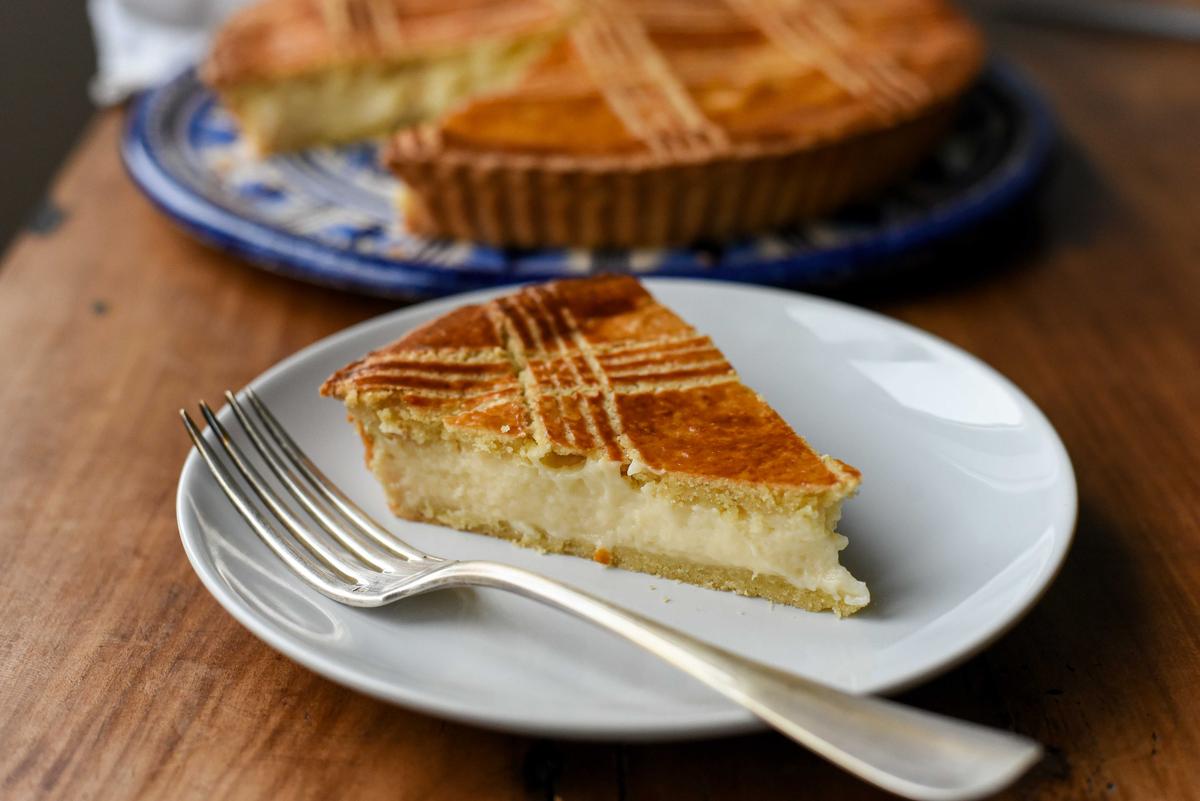
The crust is buttery and crisp on the outside and slightly chewy in the middle, as it blends with the luscious filling. Audrey Le Goff

